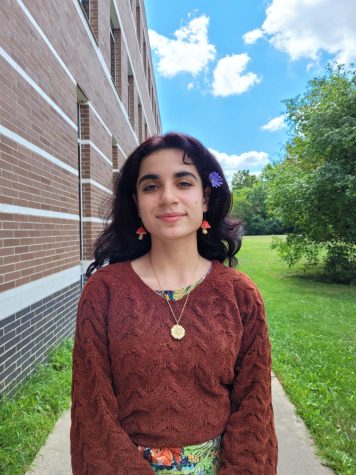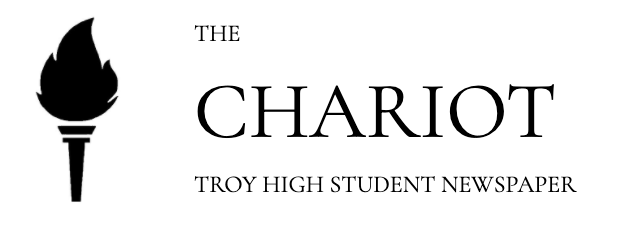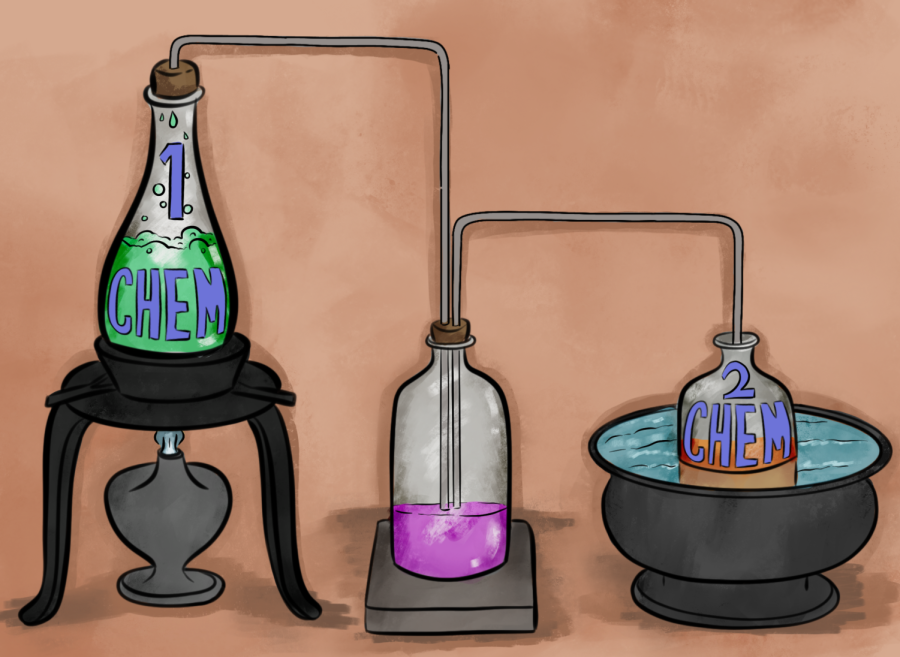Experimenting with Curriculum
Chemistry 1 is splitting into two courses: Chemistry 1 and Chemistry 2.
Curriculum changes have become a prevalent conversation in the Troy School District, due in large part to the abolishment of honors English classes. However, there are multiple curriculum changes that have been discussed far less, one being the changes made to the Chemistry curriculum.
Previously, students in the Troy School District have been required to take a full credit, or two semesters, of Biology, Chemistry or Physics, a science elective or two half-credit science courses.
When asked how she would describe the changes being made to the Chemistry curriculum, Chemistry teacher Katie Robles said, “Chemistry, instead of being one year long, is going to be broken into two semesters. Right now they’re called Chemistry 1 and Chemistry 2, but that might change in the future, and it’s a complete overhaul from what the old Chemistry curriculum used to be.”
The change to the Chemistry curriculum was prompted by the State of Michigan changing their required standards in 2015. The standards now require students to learn all standards assigned by Next Generation Science Standards- Michigan Science Standard.
There are 15 categories of standards which consist of categories including Chemical Reactions, Forces and Interactions, Interdependent Relationships in Ecosystems, Natural Selection and Evolution, Space Systems and many more. Overall, there are 52 standards that have to be met.
The standard change prompted an extensive review of the Troy School District’s science program. Robles played an integral role on the board that reviewed and the further development the curriculum changes. The review revealed that the current high school requirements did not fully meet Michigan’s standards; specifically the life science, physical science and earth science requirements.
When responding to why the Chemistry curriculum is being changed, Robles said, “We want to give every student an opportunity to take Chemistry. They’ll be required to take half a year of Chemistry so that they can get a little taste of it, and if they want to continue on in Chemistry, they can go on to that second semester.”
Offering half-year classes allows for students to take Biology, Chemistry, Physics and Earth Science while still allowing for students to take science classes they are interested in. It exposes students to a wider array of subjects that may improve their education or help them decide on a possible career.
Along with Chemistry, the Physics curriculum is also in the process of being updated. Biology will continue to be a full-year course, which is taken primarily by freshmen. The new course, Earth Science, will be an environmental science course that students will be required to take for at least one semester.
There is some concern surrounding the new Chemistry curriculum, and splitting the course in two. Robles addresses these concerns, stating that there are positives and negatives to the new curriculum. “There are a lot more critical thinking skills involved, they’re doing a lot more hands-on labs, and it’s a lot more applicable to their everyday lives rather than just pumping out chemistry equations or chemistry problems. The other benefit would be that in the second semester, since you only have students who really want to be there, you can go faster, cover more material, and it’ll be a little bit more math heavy.”
Robles discussed the negatives, saying, “Possible drawbacks would be relationships with teachers. Sometimes it’s nice to have a class for a whole year, where you can build a lot better relationships with your class than if you’re splitting them up for a semester.”
The new Chemistry curriculum will affect the incoming freshman, the class of 2027, and all the classes after them.
Your donation will support the student journalists of Troy High School - MI. Your contribution will allow us to print our work, purchase equipment and cover our annual website hosting costs.



